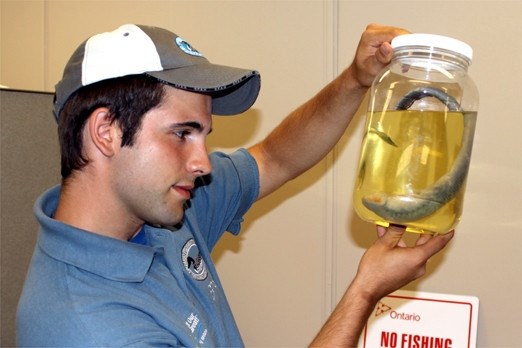Canada and the United States used to harvest 15 million pounds of lake trout from Lake Huron and Lake Superior annually.
By the early 1960s, they were only netting about 300,000 pounds, a fact that’s been attributed to the appearance of the sea lamprey, a species native to the Atlantic Ocean. Sea lamprey is just one of many invasive species wreaking havoc in Northwestern Ontario’s freshwater; they’ve entered the Great Lakes through manmade canals over the past century and have since devastated fish populations.
And while the lamprey population has been controlled throughout the decades, they can still be found in local waters, including the Kaministiquia River.
Eurasian ruffe and the round goby can also be found in the Kam River and rusty crayfish have been discovered in Cloud Lake this year.
"People aren’t aware of how many problems they do cause fish and plant life," said Scott Vaillant of the Ministry of Natural Resources and Ontario Federation of Anglers and Hunters’ Invasive Species Awareness Program.
"Because they’re not native to the area, they don’t have that many predators here," added Vaillant. "They can eat fish eggs; they can even eat a fish. Even though a fish can sometimes eat them, it won’t keep up with their reproduction rate."
Every year there is countless invasive species arriving in Lake Superior and into the Thunder Bay area through a variety of ways.
"A major problem is ballast water from other ships coming from overseas," said Vaillant. "They also come to this particular location through manmade transfers or illegal transfers and also different people fishing and releasing their live wells and bait."
The average citizen can help by cleaning their boats before transferring it to and from different bodies of water, he added.
"People aren’t aware that different organisms and vegetation can be stuck on their propellers," he said. "When we transfer to a different lake, whatever is on their propellers gets transferred now into a different location."
Sign in or register
- Messages
- Post a Listing
- Your Listings
- Your Profile
- Your Subscriptions
- Your Likes
- Your Business
- Support Local News
- Payment History
Registered Users
Already have an account?
New Users
Create a free account.
